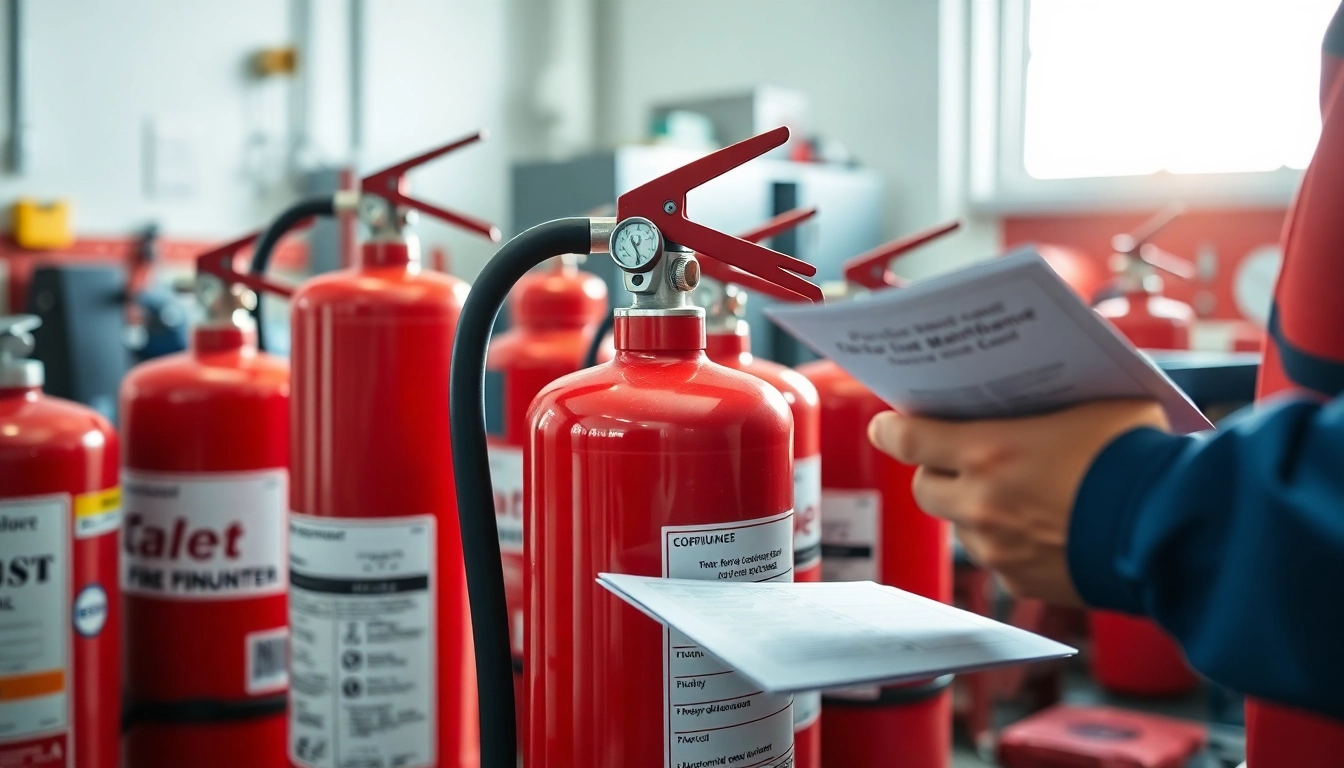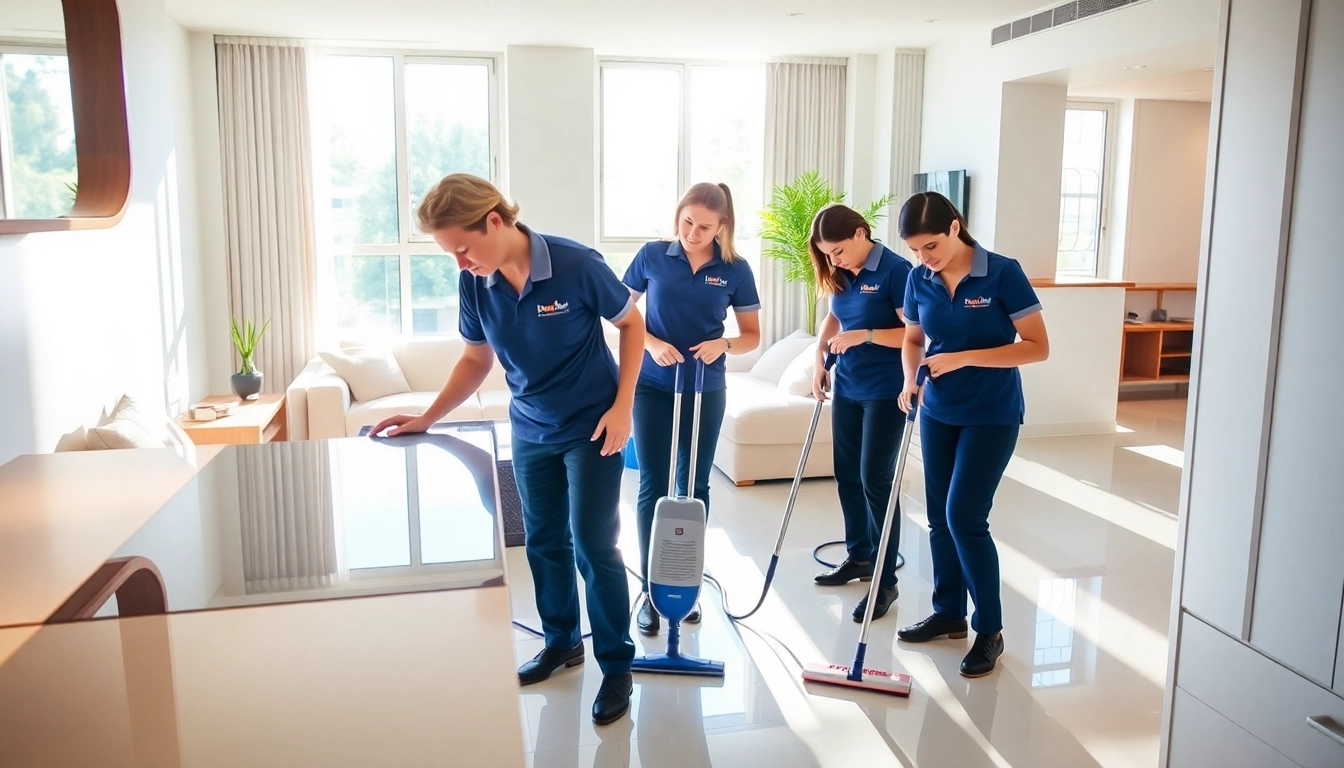Understanding Fire Extinguisher Maintenance
What is Fire Extinguisher Maintenance?
Fire extinguisher maintenance refers to the systematic process of inspecting, servicing, and ensuring that fire extinguishers are operational and ready for use in case of a fire emergency. Regular maintenance is vital, as it prevents equipment failure and ensures compliance with safety regulations. By incorporating regular checks and professional servicing, you can ensure that your fire extinguishers remain effective during emergencies. This maintenance includes visual inspections, functional tests, recharging, and annual professional servicing, all aimed at ensuring these lifesaving devices perform their intended purpose. For more detailed guidance on fire extinguisher maintenance, it’s essential to understand the required standards and practices.
Importance of Regular Inspections
Regular inspections are critical for several reasons. Firstly, fire extinguishers are often the first line of defense against small fires, so ensuring they are functioning properly can save lives and property. Moreover, fire codes and regulations across various states mandate that businesses and facilities maintain their fire safety equipment, including extinguishers. Failure to comply with these regulations can lead to legal issues and increase the risk of severe fire damage. Regular inspections also help identify potential issues, such as physical damage, corrosion, or the expiration of components, which could render the extinguisher ineffective.
Safety Standards and Regulations
In the United States, the National Fire Protection Association (NFPA) sets the standards for fire extinguisher maintenance through NFPA 10. Compliance with these standards is essential for safety and legal reasons. According to these regulations, fire extinguishers must receive a thorough inspection at least once a year, and certain types of extinguishers require additional servicing such as hydrostatic testing every five to twelve years. Regular audits and adherence to these standards can also enhance the reliability of fire safety measures within your facility.
Monthly Fire Extinguisher Inspections
How to Conduct Monthly Checks
Monthly inspections can be performed by any responsible employee trained in fire safety. The process is straightforward and critical for ensuring readiness. During the inspection, the following steps should be taken:
- Check if the extinguisher is easily accessible and visible.
- Inspect the pressure gauge to ensure it’s in the green zone.
- Look for physical damage such as dents, rust, or leaks.
- Ensure the safety pin is in place and the tamper seal is unbroken.
- Check that the extinguisher is properly mounted according to regulatory guidelines.
Document any findings and report them to the designated maintenance personnel to address any issues promptly.
Common Issues to Look For
During monthly inspections, it is essential to be vigilant about common issues, including:
- Pressure gauge readings outside the acceptable range
- Corrosion or rust on the extinguisher body
- Blockages obstructing the discharge nozzle
- Damaged or missing tags and labels
- Any unusual odors or physical anomalies
Identifying these signs early can prevent equipment failure and ensure that your fire extinguishers will work effectively when needed.
Record Keeping for Compliance
Maintaining detailed records of monthly inspections is crucial for compliance with safety regulations. Each inspection should be documented, including the date of the inspection, the name of the inspector, and any issues found during the check. Proper documentation not only ensures compliance with NFPA standards but also serves as a valuable reference for future maintenance and audits. Companies should appoint a person responsible for maintaining these records, detailing the maintenance history of each extinguisher.
Annual and Hydrostatic Testing Requirements
What to Expect During Annual Maintenance
Annual maintenance typically involves a detailed inspection conducted by a certified fire equipment technician. This inspection includes an internal examination of the fire extinguisher and thorough tests to ensure functionality. During this process, the technician will:
- Inspect the physical condition of the extinguisher.
- Test the extinguishing agent for efficacy and compliance.
- Recharge the extinguisher if necessary.
- Replace any defective parts as required.
- Document all findings on the service tag or record.
It’s vital to schedule this maintenance to align with facility needs and regulatory requirements.
Hydrostatic Testing Explained
Hydrostatic testing is a critical process performed every five to twelve years depending on the type of extinguisher. This test evaluates the container’s ability to withstand pressure, ensuring that it can hold the extinguishing agent safely. The process typically involves filling the extinguisher with water and testing it under high pressure, which can reveal weaknesses or potential failures in the extinguisher casing. Any extinguisher that fails this test must be taken out of service and either repaired or replaced.
Frequency and Documentation Requirements
The frequency of inspections and testing should be well understood to maintain compliance. NFPA 10 requires monthly inspections by the user, annual inspections performed by certified professionals, and hydrostatic testing according to manufacturer guidelines. Proper documentation of all tests and maintenance activities must also be kept, detailing the nature of the work performed and dates of service.
Choosing the Right Service Provider
Qualifications of Certified Inspectors
Selecting a qualified service provider for maintenance is crucial for effective fire safety management. Look for providers who are certified by the NFPA or other reputable organizations. Inspectors should have comprehensive training in fire safety equipment and a deep understanding of the applicable codes and regulations. Checking references and verifying credentials can ensure reliability and quality of service.
Evaluating Service Options and Costs
When evaluating service providers, consider not just the cost but the range of services offered. Some companies provide comprehensive plans that include regular inspections, recharging, and hydrostatic testing at a flat rate. Compare several providers to determine who offers the best combination of value, reliability, and responsiveness to your facility’s needs.
Maintaining an Effective Maintenance Schedule
Developing an effective maintenance schedule is crucial for ensuring compliance and safety. Create a calendar that outlines when monthly inspections and annual maintenance will occur. Assign responsibilities to specific staff members and ensure they are trained in the inspection process. Make use of reminders or checklists to promote accountability and adherence to schedules.
Fire Extinguisher Maintenance Best Practices
Creating a Maintenance Checklist
A maintenance checklist acts as a useful tool in ensuring compliance and thorough inspections. Alongside monthly and annual checks, include a checklist that covers key areas such as:
- Visual inspection criteria (condition, accessibility)
- Expiration dates of extinguishing agents
- Scheduled service dates for hydrostatic testing
- Last maintenance date and items serviced
This checklist should be integrated into training materials for employees responsible for inspections and should be kept accessible next to each fire extinguisher.
Implementing Frequent Training for Staff
Training staff on the importance of fire safety and the proper use of extinguishers is an invaluable practice. Regular training sessions can help familiarize employees with the operation of extinguishers and the routine maintenance checks they should conduct. Consider involving local fire departments for workshops or demonstrations to enhance learning and emphasis on safety protocols.
Staying Updated with Latest Safety Guidelines
The world of fire safety is ever-evolving with new technologies, regulations, and best practices. It is essential to stay informed about the latest safety guidelines issued by organizations such as the NFPA or OSHA. Regularly review changes in regulations applicable to your specific industry and adjust your maintenance practices accordingly. Engage with webinars, industry journals, and professional associations as resources to remain up to date.




